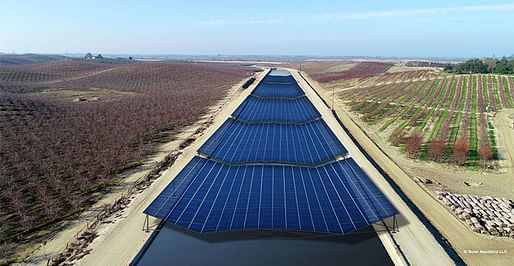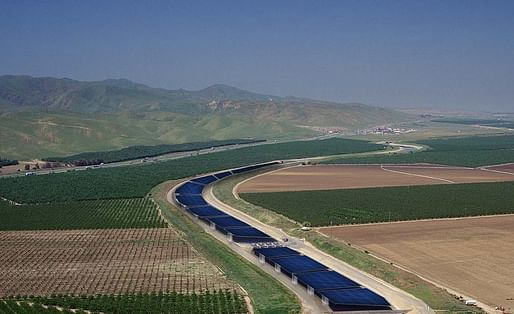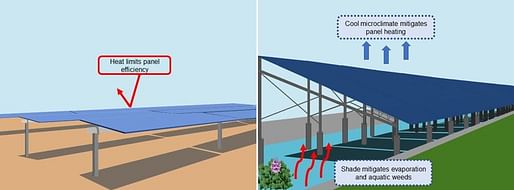

A consortium in California has announced its ambition to construct a network of solar panels over a segment of the state’s canal system. The project, named Project Nexus, will build on research by a UC Merced environmental engineering graduate, which we originally reported on back in May 2021.
The graduate, Brandi McKuin, was part of a team who demonstrated that covering California’s 4,000 miles of water canals in solar panels could potentially reduce water evaporation by 82%. This reduction would save 63 billion gallons of water per year, enough to irrigate 50,000 acres of farmland or meet the residential water needs of 2 million people.

Covering the entire state’s canal system in solar panels would also generate 13 gigawatts of renewable energy, equal to 17% of the state’s current solar capacity. The move would deliver half of the projected new solar capacity required by California to meet its 2030 decarbonization goals, including a commitment to generate 50% of its electricity from renewable sources.
Having recently been approved by the Turlock Irrigation District (TID), a pilot network of solar panels will be constructed over several canal segments in the San Joaquin Valley. Project Nexus will be the first project of its kind in the United States, with $20 million in funding allocated. Construction is set to begin in 2024 by a partnership consisting of TID, the Department of Water Resources, Solar AquaGrid, and UC Merced.

McKuin, now a postdoctoral researcher at UC Santa Cruz, will return to UC Merced as a project scientist to conduct studies related to the pilot project, in collaboration with engineering Professor Sarah Kurtz. Challenges to be addressed by the team include the relatively high cost of the solar canal structures, the need to maintain access to the canals for maintenance, and the most effective means to deliver the electricity to a wider network.
In addition to improving the project’s design in response to these challenges, the team will also map the state’s canals to identify which design solutions are most beneficial for each segment and to eliminate segments deemed unable to accommodate solar panels. A life cycle assessment will also be generated on the system to understand its long-term cumulative environmental impact.

Project Nexus is the latest innovative solution to impact California’s built environment. Last year, the state mandated the installation of solar panels for many new buildings; the first in the nation to do so.
Last week, meanwhile, we reported on a potential vote to take place in San Francisco which would see a tax placed on empty residential homes, designed to increase the supply of rental properties in the city.
1 Comment
Wonderful project - a real win-win; may the implementation be successful. Nice how the panels are evaporatively cooled, increasing their efficiency. Perhaps additional E could be collected by tapping into movement of the water in the canals.
Block this user
Are you sure you want to block this user and hide all related comments throughout the site?
Archinect
This is your first comment on Archinect. Your comment will be visible once approved.